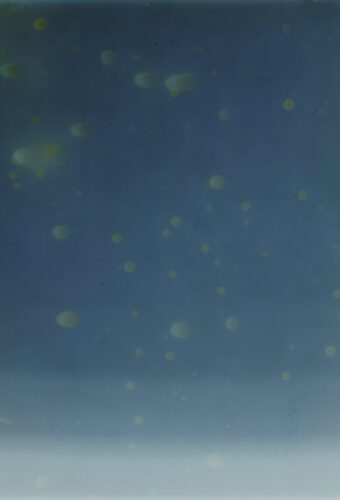Exhibition Ecosystems & Forms of Life
Several artists and projects linked with Thinking Tools will present work in the Forms of Life and Ecosystems exhibitions during the Articulate festival at the Royal Academy of Antwerp.
Ecosystems is an exhibition with printed matter by the early land-, earth- and eco- artists, and works by Mirja Busch, Charo Calvo, Jeroen Cluckers, Tim Theo Deceuninck, Eline De Clercq, Els Dietvorst, Helen Mayer Harrison & Newton Harrison, Sascha Herrmann, Patricia Johanson, Ilaria Lup, Jarek Lustych, Dries Segers, Kristof Timmeran, Saskia Van Der Gucht, among others.
Ecosystems are intricate networks, critical to our planet’s health and sustainability, where living and non-living, human and non-human elements interact and coexist. By incorporating the theme of the ecosystem into the ARTICULATE programme, we aim to ignite critical thinking about interconnectedness, adaptation and resilience. This exhibition invites you to explore the intricate tapestry of ecosystems through the lens of historical and contemporary artistic practices. It tells a (possible) story of six decades of environmental awareness in the arts, offering a selection of works and projects that exemplify inspiring practices and theoretical concepts.
The relationship between art and ecology plays an increasingly important role in the artistic research conducted at the Royal Academy of Fine Arts Antwerp. The exhibition ‘Ecosystems’ offers not only a fascinating look at the printed matter and writings of early land-artists and eco-pioneers, but also an insight into what is currently buzzing within the artistic research at the Academy in terms of art and ecology, science, activism and the intriguing interplay between them.
The artists involved in the Thinking Tools research group will be shown in the third section of the ‘Ecosystems’ exhibition. They are made by the four artists working within the context of the Hydromedia: Seeing with Water-project and Dries Segers who will present works from his current research project ‘Ask your hands to know the things they hold’. Together with the other artists, this section looks at the current artistic research at the Academy and shows how artists today engage in practices and research to develop new and innovative ways to rekindle the relationship with the natural world we inhabit, and to acknowledge the fundamental interdependency of man and nature. The diverse contributions mirror the complexity, fragility and resilience of the ecosystems that sustain life on Earth.
This part aims to give inspiration to a young generation of art students who are looking for ways to cope with the world of today. Art, science and activism can help us to discover – and research, understand, share and take care of – our planet.
Supported by the Thinking Tools research group, the Forms of Life research project (2021-t2023), developed with a group of sixteen young artists from different departments of the Royal Academy of Fine Arts Antwerp, explored the multiple resonances of a question animating all fields of contemporary creation, thought, and society: that of our relation to other forms of life, and the ways in which we inhabit the world. Its aim was to question the links that weave together the work of art and the world; images and the living; the forms that surround us and those we create – in other words, the fabric of life itself.
Fueled by seminars, readings, regular exchanges within the group, encounters with guest authors and artists, and a collective experience at workshops in Antwerp and Venice, the participants decided to structure the second year of Forms of Life around the conception of an exhibition project.
Born organically, the ‘Forms of Life’ exhibition is as much a reflection of the artists’ individual trajectories during these two years of research as it is of a collective experience. While the forms they take are varied – installation, sculpture, video, photography, painting – the works seem to be permeated by the same breath: that of a porous relationship with the world, in which the artistic gesture is not envisaged as the imposition of a form on a material, but rather considered from the angle of collaboration, listening, attention, and immersion.
Numerous questions that lay at the heart of the research project run through the exhibition: the relationship between humans and other- than-humans (Rafaela Figurski Vieira, Rune Tuerlinckx), the question of landscape (Paul Müller, Oona Oikkonen, Max Beets, Witold Vandenbroeck), that of process and materials (Laurence Petrone), attention to ‘weak signals’ observed in everyday life (Pieter Eliëns, Maria Sawizki) and the notation of the present (Malena Guerrieri). Other proposals were directly influenced by the collective experience, particularly the workshop in Venice (Pit Riewer, Nina Gross). Finally, Alexandra Vitalyevna Samarova’s proposal makes visible the constellation of times and personal geographies traced by the group members in the months leading up to the exhibition.
The exhibition also includes a collective project, the Atlas of Forms, which informed the development of Forms of Life. Each member of the group was invited to feed this ‘atlas’ with images related to the observation of ‘forms’ in everyday life. Some images were published as postcards (designed by Kristí Fekete and Maren Katharina Rommerskirchen) scattered throughout the exhibition, continuing their life beyond the research project.




